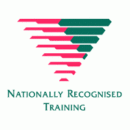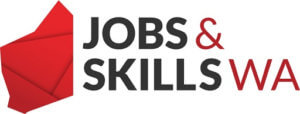BSB50420 Diploma of Leadership and Management

Study Options
Here at The Pivot Institute, we are leaders in the field with our own Pivot Online Learning System (POLS). Virtual face-to-face participants will be set up on our leading online learning platform; the Pivot Online Learning System (POLS). This platform provides students with the content, resources and assessment documentation necessary to complete the course. Participants will attend virtual classrooms with industry leading facilitators. Participants can start the course anytime and will be required to book in and attend sessions via Zoom. Printed workbooks, assessment documentation and all resources are provided and posted to students.
You can start the course any time. You will be provided with a hard copy pack including your Learner’s Guide, assessment materials and all relevant supporting material. In addition access will be provided to the Pivot Online Learning System (POLS). This platform holds all the learning material, assessment requirements, resources, needed to complete the qualification.
Recognition of Prior Learning (RPL) at The Pivot Institute is an assessment only pathway. The RPL process assesses your non-formal and formal learning to determine how your current skills and knowledge match the competency outcomes for partial or full qualification. RPL assessment at The Pivot Institute allows you to evidence your skills and knowledge through the completion of an RPL kit.
Non Funded Price: $4500
Payment Plan options available
*The student fees are indicative only and are subject to change given individual circumstances at enrolment. Additional fees may apply such as resource fees and other fees.
Apply today. Click below to complete your online application form. Once our team have processed your application, we will be in touch to get you started.
Course Overview

Entry Requirements
To enrol in this qualification, participants should be working in, or aspiring to work in an administration, supervisory or project officer role. Participants will require language, literacy and numeracy skills, access to computer and internet as well as computer literacy.
Course Duration
The duration of BSB50420 – Diploma of Leadership and Management course is 12 months.
The average time it takes to complete varies significantly depending on the skills and knowledge you already hold. If, for example, you are attending the facilitated classes and you have completed the relevant activities, you will still need to allow the following suggested time to complete the Qualification.
5 hours a week – 12 months
Modes of Delivery
Facilitated Virtual Delivery– You can start the course any time. You will be required to attend sessions on Zoom using Pivot Online Learning System (POLS). You will also be provided access to Pivot Online Learning System (POLS) that includes all the learning material, assessment, and resources to complete the course.
Self-paced Online Learning – You can start the course any time. You will be supported by a trainer/assessor and provided with a hard copy pack including your Learner’s Guide, assessments, and all relevant resources. In addition, access will be provided 24/7 to the Pivot Online Learning System (POLS) that includes all the learning material, assessment and resources needed to complete the course.
Recognition of Prior Learning (RPL) – Recognition of Prior Learning (RPL) is an assessment process that assesses your non-formal and formal learning to determine how your current skills and knowledge match the competency outcomes for partial or full qualification. RPL assessment at The Pivot Institute allows you to evidence your skills and knowledge through the completion of an RPL kit.
Broad Learning Outcomes
This qualification has the following broad learning outcomes:
– Develop personal work goals, set and meet own work priorities and develop and maintain professional competence.
– Prepare for, conduct and follow up meetings.
– Allocate work for employees, assess performance and provide feedback.
– Establish a Team Performance Plan, develop team cohesion and facilitate teamwork.
– Lead and manage continuous improvement in the workplace.
– Develop an operational plan, including resource acquisition and monitor and review operational performance.
– Develop and use emotional intelligence and promote the development of emotional intelligence in others.
– Lead and manage effective workplace relationships.
– Manage risks in a range of contexts across an organisation or for a specific business unit area in any industry setting.
Course Structure
BLOCK 1: MANAGING YOURSELF & OTHERS
BSBPEF501 – Manage Personal and Professional
Development
BSBLDR522 – Manage People Performance
BSBTWK503 – Manage Meetings
BLOCK 2: CONTINUOUS IMPROVEMENT, TEAMS & CUSTOMER SERVICE
BSBTWK502 – Manage Team Effectiveness
BSBLDR411 – Demonstrate Leadership in the Workplace
BSBSTR502 – Facilitate Continuous Improvement
BLOCK 3: COMMUNICATION, PLANNING AND CRITICAL THINKING
BSBCMM511 – Communicate with Influence
BSBOPS502 – Manage Business Operational Plans
BSBCRT511 – Develop Critical Thinking in Others
BLOCK 4: MANAGING RISK, WORKPLACE RELATIONSHIPS AND DEMONSTRATING EMOTIONAL INTELLIGENCE
BSBOPS504 – Manage Business Risk
BSBPEF502 – Develop and Use Emotional Intelligence
BSBLDR523 – Lead and Manage Effective Workplace Relationships
Course Calendar
This course calendar is only for students participating in facilitated virtual delivery. Following dates have been scheduled for virtual units delivery via zoom from 9:00 am to 4:30 pm. There are four clusters of workshops which can be attended in any order.
Block 1: MANAGING YOURSELF & OTHERS
Block 2: CONTINUOUS IMPROVEMENT, TEAMS & CUSTOMER SERVICE
Block 3: – COMMUNICATION, PLANNING AND CRITICAL THINKING
Block 4: MANAGING RISK, WORKPLACE RELATIONSHIPS & DEMONSTRATING EMOTIONAL INTELLIGENCE
Assessments
Candidate Assignment Booklet
For each unit, you will be provided with a Candidate Assignment Booklet. In each booklet there are a series of tasks relevant to each unit. We work to ensure that the tasks are clear and that you have the right support and resources to undertake your assessment. This qualification requires that a number of activities are undertaken to prove competency so please consider these requirements prior to committing to the program. You will need to complete all tasks in order to be assessed for competency. Your assessment will be comprised of a number of tasks which will include some of the following:
– Complete a range of activities related to effective communication in the workplace.
– Use tools of continuous improvement to identify an opportunity to improve service excellence within your organisation.
– Undertake research to identify potential business risks and develop a risk matrix and action plan.
– Analyse your current emotional strengths and weaknesses and develop resources to support the development of EI in the workplace.
Assessment Process
During the assessment process your assessor will:
– Answer any questions or concerns you may have about the assessment process or tasks
– Assess your competency as required by the unit of competency, by making judgments about the evidence presented in line with the rules of evidence: validity, authenticity, currency and sufficiency
– Give you feedback on the outcomes of the assessment process
– Provide your results, either competent or not yet competent
– advise you on the outcomes of the assessment including the appeals process you can follow if you disagree with the assessment decision
Get a USI (Unique Student Identifier)
Get a USI (Unique Student Identifier)
A USI is your lifelong education number – you only need to create it once. If you have undertaken any VET training since 2015, you may already have a USI. You can find it here.
If you don’t have USI, you can Apply for USI
Subsidised Traineeship and Eligibility Requirements
Funding Eligibility
- The WA State Government, through Jobs and Skills WA, subsidises vocational education and training (VET) courses in priority areas, to reduce or remove the fees and make training more accessible to all Western Australians.To be eligible for free training, reduced-fee qualifications or a subsidised training place; you must have left school, have your primary place of residence in Western Australia, and are either:
-
- an Australian citizen; or
- a permanent visa holder; or
- a visa sub-class 309, 444, 785, 790, or 820; or
- a bridging visa E holder (subclasses 050 and 051) who has made a valid application for a visa subclass 785 or 790;
- Ukraine citizens who are holders of a visa subclass 449 or 786;
- Afghan citizens who are holders of a visa sub-class 449; or
- Holders of a bridging visa who are eligible to work and who have made a valid application for a subclass 866.
- a dependent or spouse of the primary holder of a visa subclass 457
- a bridging visa holder who has made a valid application for a visa subclass 866;
-
- Persons under 18 years of age in the year of enrolment must be under a DoE Notice of
Arrangement (NoA)2 (Full Time) or exempted from the School Education Act 1999.
This does not include Students undertaking a school based program such as an
Apprenticeship, Traineeship, Pre-apprenticeship, or Aboriginal School Based Training
(ASBT) Program.
- Persons must have a valid Unique Student Identifier (USI)
Traineeship Eligibility
Trainees must meet the requirements for funding eligibility and meet the new worker definition (i.e. have been employed for less than 3 months full time or less than 12 months part-time or casual prior to commencing the qualification) Trainees will be employed in an appropriate role that reflects the requirements of the qualification.
Contact us today for enrolment!

